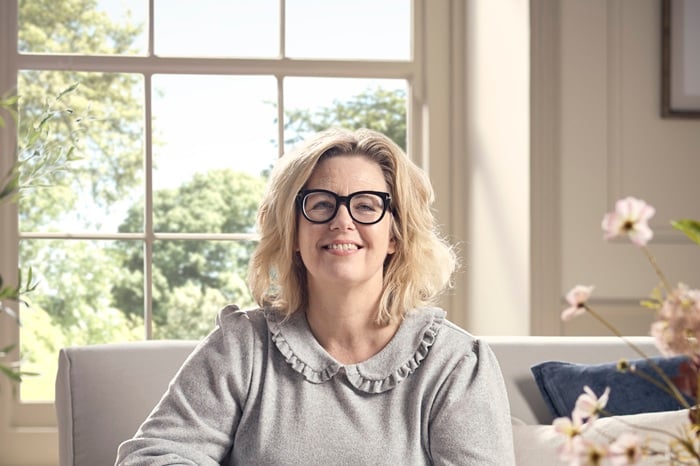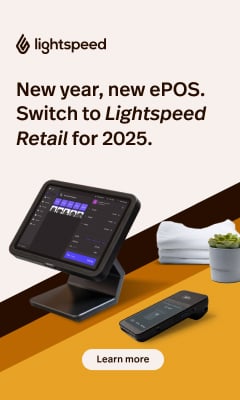Conversation with… Jan Duckworth, managing director of Cox & Cox
Jan Duckworth has recently joined Cox & Cox as managing director as the luxury homewares brand looks ahead to a new period of growth. In this exclusive interview, we discuss her fantastic career to date, her innovative approach, the evolution of marketing in retail, and the mentors who’ve shaped her path.
You’ve had an incredibly varied career, especially in the beginning. You started in sales before moving to marketing. Can you tell us a bit more about that?
I started out in a sales role, mainly because when I finished studying, I had an interest in marketing. But at that time, marketing roles were quite scarce. Industry hadn’t quite figured out where marketing fits in relation to sales, and so the opportunities were limited.
I ended up taking what I thought was the next best option – a sales job. It was a cold-calling role in the printing industry, and honestly, I hated it. The one perk was that I got a brand-new Peugeot 205! But I wasn’t very good at it, and I found the experience quite intimidating. I lacked the confidence to knock on doors and pitch effectively. I stuck it out for a year, never hit my target, and realised that it wasn’t the right fit for me.
Never Miss a Retail Update!Then, my dad spotted an advert in the newspaper for a marketing assistant role at Vymura International Wallcoverings. Coincidentally, our next-door neighbour was a plant manager at one of their factories. He gave me a tour, and although I didn’t fully understand what I was looking at, I found it fascinating.
During my interview, I somehow ended up speaking passionately about colour and design – something I hadn’t expected! I also had to create a mock pattern book, which I think sealed the deal. That was the start of my career in marketing. I began at a very junior level but quickly moved up through product management, where I gained a deep understanding of products. Eventually, I became marketing controller.
It sounds like you were a real innovator in that role
Yes, I was always pushing the company to do new things as they were quite traditional there. One of my key contributions was introducing character licensing, something they initially resisted. They doubted that brands like Hanna-Barbera and Walt Disney could work together in one pattern. But I proved them wrong, and it became a big success.
From there, I moved to Dorma, where I focused more on direct-to-consumer marketing. Dorma was the biggest interiors brand in the UK at the time, with over 320 shop-in-shop outlets in department stores. This was where I really honed my retail marketing skills, including promotions, store packaging, branding, and even introducing direct mail. It was groundbreaking then, though it may not seem so now.
You then ran your own shutters business before making the move into fashion with Henri Lloyd. What led to that transition?
The shutters business was tough due to the competition, and I’d always been interested in fashion and trends – understanding what’s driving consumer behaviour. The move to Henri Lloyd was serendipitous. Michael Page Marketing approached me with an urgent three-month marketing manager role. It was an exciting opportunity, and I was eager to dive in.
Working for Henri Lloyd opened the door to a whole new world for me. I had never sailed before. I didn’t even know the sailing world existed in that way. But once I was in, I saw how incredible it was.
We were involved in everything from regattas to the America’s Cup, which was just mind-blowing. I worked closely with Ben Ainslie, the four-time Olympic gold medallist, as he was one of our ambassadors. We also sponsored Formula One during Brawn’s championship-winning season and worked with Mercedes. I even met Michael Schumacher. It was an amazing experience, and I just happened to be in the right place at the right time.
It sounds like a really big role. How did you balance it with bringing up your young family – it must have been challenging
I actually had another child while I was there – only about 18 months into the role. So, I had three children, and we had to juggle things. Luckily, my partner was incredibly supportive, and as he was self-employed, he could help manage things at home. The kids were all in nursery from six months old, which, looking back, sounds quite brutal, but it was just what we had to do.
Back then, especially in a career like marketing or retail, if you stepped out for too long, you risked being overlooked. It was important to keep going to maintain career progression.
After Henri Lloyd, you worked with JD Sports in a senior marketing role. What prompted that change?
Initially, at Henri Lloyd, I started on the lifestyle and fashion side before moving into marine. It involved international fashion, shows, events, and campaigns. But after a while, I realised my marketing work wasn’t getting the exposure I wanted. That’s why I moved to JD Sports – I wanted to work in a team with a budget that could really showcase our efforts.
JD Sports was a whirlwind five years. I worked on own-brand marketing, helping build brands from scratch – like Supply & Demand streetwear. It was a high-energy environment, working with buyers to carve out market positions. I also led JD’s famous ‘Face of JD’ campaigns, which gave real customers opportunities to model instead of professionals and change their lives.
Then, I moved into the creative studio side of the business, overseeing marketing across 11 countries, working with brands like Nike and Adidas, and collaborating with sports stars and celebrities. It was a tricky culture to navigate, but it was an incredible learning experience.
And then you made the switch to furniture with Sofology
Actually, I thought it would be easier than JD Sports – but it wasn’t! The customer buying journey was completely different. With JD Sports, you had constant traffic; kids want trainers all the time. But at Sofology, sofas are high-ticket items with a seven-year buying cycle. They’re considered big purchases, involving the whole family.
When I joined, it was still a family-owned business with a bold proposition – no sales at all, which was unheard of in the furniture industry. It was a completely different marketing approach. We had to stand out against retail giants with enormous budgets, so we had to be strategic.
I was there when DFS acquired Sofology, transitioning it from a family business to a corporate structure. Under Sally Hopson, and later Emma Dinnis, we went through a period of major growth. By the time I left, we had just achieved our best half-year ever, which was an amazing way to wrap up my time there.
You’ve had such a varied career. One thing that stands out is how marketing evolved during that time from traditional methods to digital. How did you adapt?
It wasn’t easy! I’m not naturally inclined toward systems and processes, so I always surrounded myself with experts in those areas. Marketing used to be one role where you did everything. Now, it’s split into multiple specialisations – digital, social, data, creative, and so on.
The key is to remember that digital is just another communication channel. It’s about knowing where your customers are. Some prefer magazines, some watch TV, and others consume content digitally. It’s about balancing the big picture brand awareness with the measurable conversion-driven side of digital marketing.
I remember when websites first became a thing, I couldn’t wrap my head around them. I asked, ‘Do I need to go into a special room to access the World Wide Web?’ (laughs). It was the same with social media – why would we send someone a free T-shirt just to show it off to their friends? But now, it all makes sense. It’s all about communication, knowing your audience, and adapting to how they consume information.
So, you then moved to Cox & Cox as managing director. How did that happen?
DFS restructured and brought Sofology’s marketing under its umbrella, leading to redundancies at the director level. Around the same time, Cox & Cox was looking for someone, and I had always loved the brand. The timing was perfect.
Cox & Cox has huge potential. It was bought 18 months ago by new owners who are passionate about growing it the right way. My role now is to give the team a vision and plan to bring that potential to life.
Can you share any future plans for Cox & Cox?
I’m only three weeks in, but my focus is regaining brand engagement and solidifying our position in the market. We have loyal customers, but we need to keep them engaged and attract new ones.
We’re also gearing up for a big outdoor season, investing in more stock than before. And of course, Christmas is huge for us – it’s what Cox & Cox is famous for! We’re putting everything in place now to make sure it’s a standout season.
Are there any standout people who have really influenced your career journey?
One person who stands out is Graham Allen, who was the CEO at Henri Lloyd and passed away recently. He touched so many people throughout his career, and we’re all grateful for the impact he had. He opened the door for me to an international world that I had never experienced before, which was an amazing opportunity.
One example of how he empowered me was when he gave me the responsibility of launching a jeans brand. He simply said, “We want to do a jeans brand, and we want you to lead it.” So, I built a complete jeans brand with a project team. I had to think creatively about how to reach young people with limited funds, so I bought a double-decker bus.
I knew someone who could drive it, and we skinned it with all the branding, turning it into a showroom and media centre. We took it to festivals, and it became a space where media personalities like Alex Jones would broadcast from. Bands would visit, and we’d gift them t-shirts. Next thing we knew, they were on stage wearing them. Graham just let me run with these ideas – it was like, “She’s off again!” But they worked, and I’m incredibly grateful to him.
Another key mentor for me is Emma Dinnis. She taught me so much, particularly about the broader aspects of business, which enabled me to land my current role. She built a senior leadership team where we all had knowledge of every part of the business. She broadened my responsibilities significantly and put her trust in me to deliver.
One of the most valuable lessons she taught me was to stop taking things too seriously. She emphasised the importance of enjoying the process, working with a smile, and fostering a fun, engaging culture. At Sofology, there was already a very special culture, unlike anything I’d experienced elsewhere. We just kept growing and growing, with her leading the way.
What advice would you give to your younger self, especially considering how much retail has changed since you started?
Don’t take things too seriously. Try to stay calm and understand that change happens all the time. Learn to roll with it. People don’t always understand everything, and that’s OK – you’ll get there in the end.
Also, try not to listen to all the noise around you. Stay focused on what you’re trying to achieve and what’s the right thing to do. That will always win the day.
So, my advice would be calm down, stop stressing, have more fun, and really get stuck in. Enjoy the journey!













